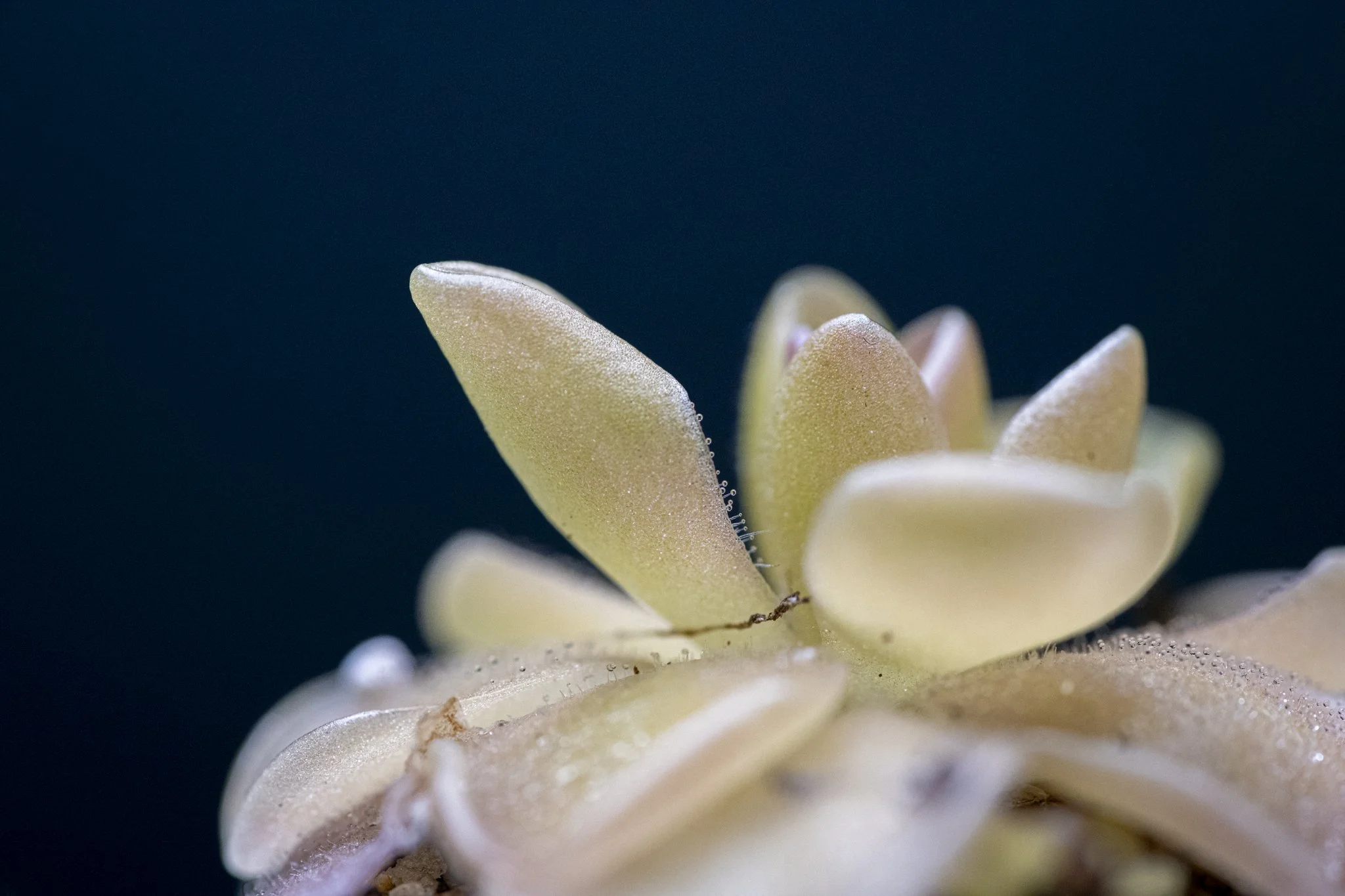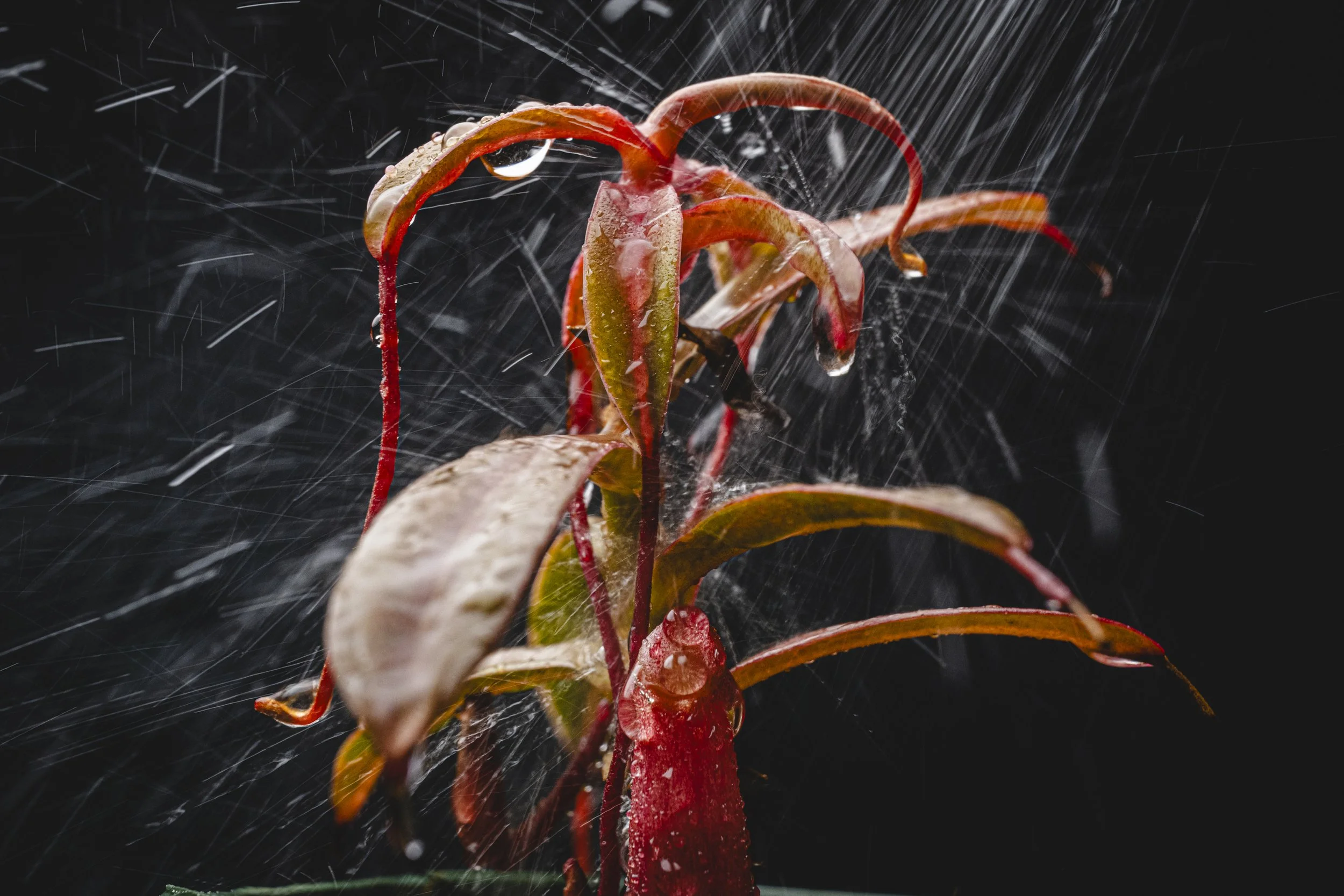Part 3: Death and Renewal of Carnivorous Plants
“I suddenly understand the insects that fly willingly into carnivorous plants. The draw is too strong, the pull too bewitching, that you forget about the danger until you’re already trapped inside””
Pinguicula ‘Pirouette’
11. They digest pollen and seeds.
In the nutrient-poor bogs, when the air stills and insects vanish, some carnivorous plants turn to softer meals — pollen, seeds, and even decaying leaves. Their leaves dissolve what others discard, converting small traces of life into the fuel of survival.
Example: Pinguicula moranensis, Drosera rotundifolia
Venus Flytrap ‘Dente’
12. They recycle the dead.
When one trap dies, another consumes it. The same enzymes used to digest insects are turned inward, breaking down old tissue to nourish the living parts of the plant. It’s a quiet, efficient cycle — death feeding life within the same body.
Example: Dionaea muscipula, Drosera binata
Nepenthes ‘St. Gaya’
13. Heavy rain can drown a pitcher.
Even predators are vulnerable. A single storm can fill a pitcher’s trap to the brim, diluting its enzymes and suffocating its function.
Example: Nepenthes sp., Sarracenia leucophylla
Nepenthes barcelonae
14. Some are gendered.
In the genus Nepenthes, each plant is distinctly male or female — an unusual trait in the plant kingdom. Their flowers differ in form and fragrance, each releasing unique chemical signals that draw pollinators through scent alone. Even reproduction here feels ritualistic.
Example: Nepenthes barcelonae
Sarracenia sp.
15. Old pitchers become wetlands.
When their hunger fades, their purpose transforms. Abandoned pitchers fill with water and decay, becoming miniature ecosystems where frogs breed, larvae swim, and bacteria thrive.
Example: Nepenthes ampullaria, Sarracenia purpurea
Previous in the Series → Part 1: 5 Unusual Facts about Carnivorous Plants that are Not About Luring Prey, Part 2: Partnerships — How Carnivorous Plants Make Deals with the Wild
Cultivate Wonder,
We Bite Rare & Unusual Plants
Research at home.
We Bite carries examples of the plants discussed in this post but if you’re not local to New Orleans, you can still shop our plants via Palmstreet or Etsy.




